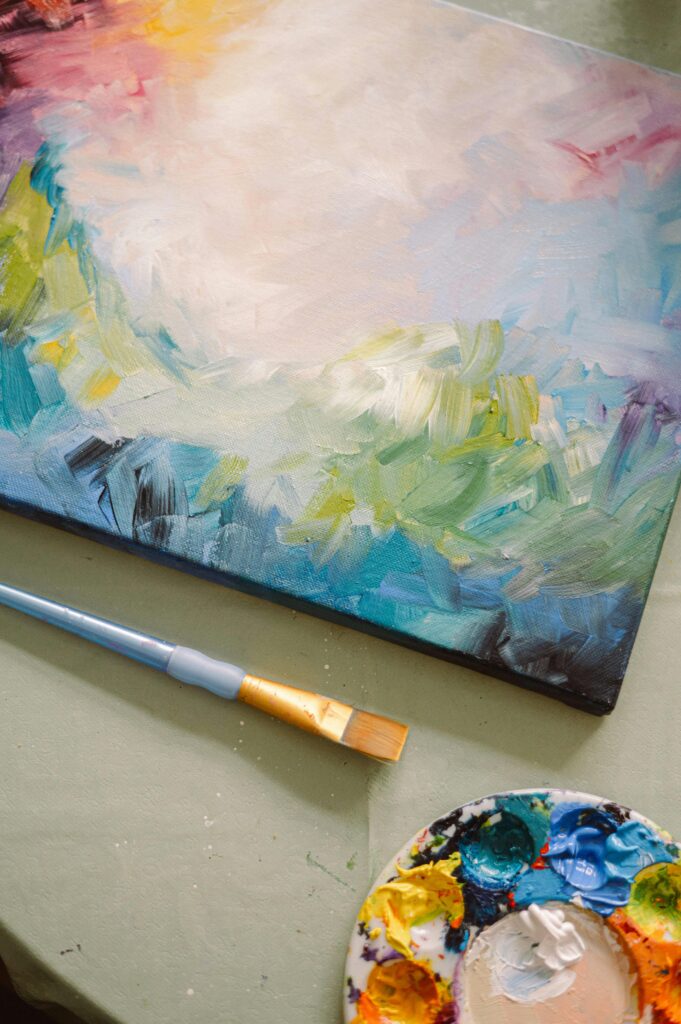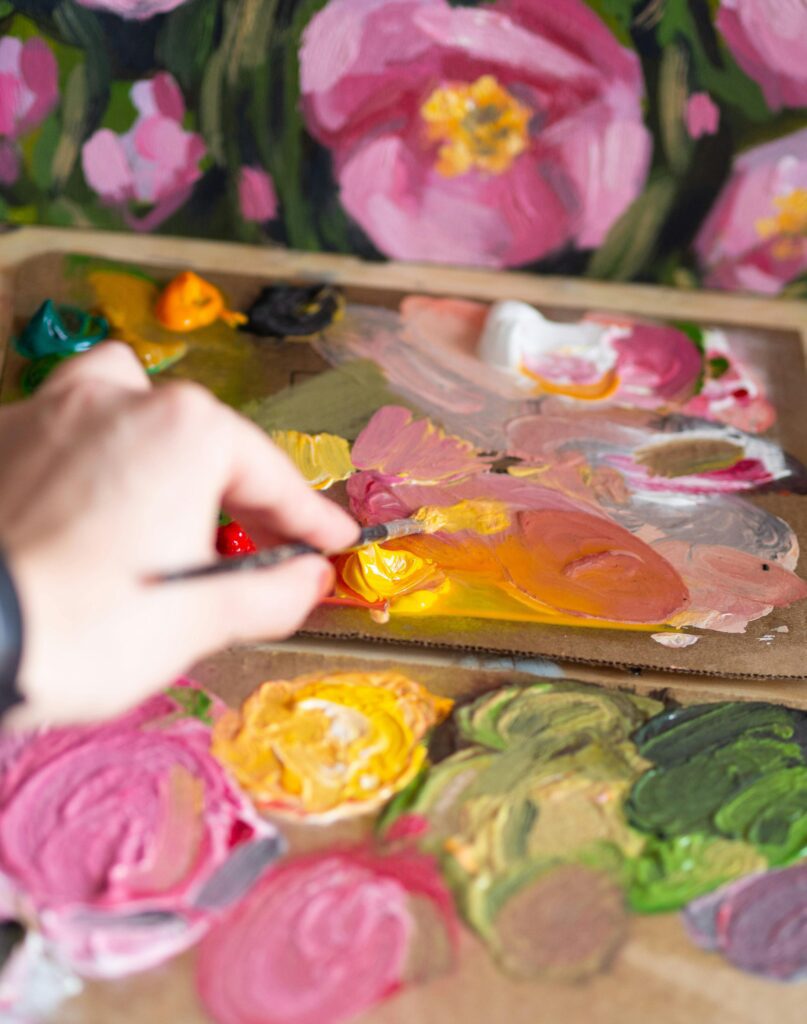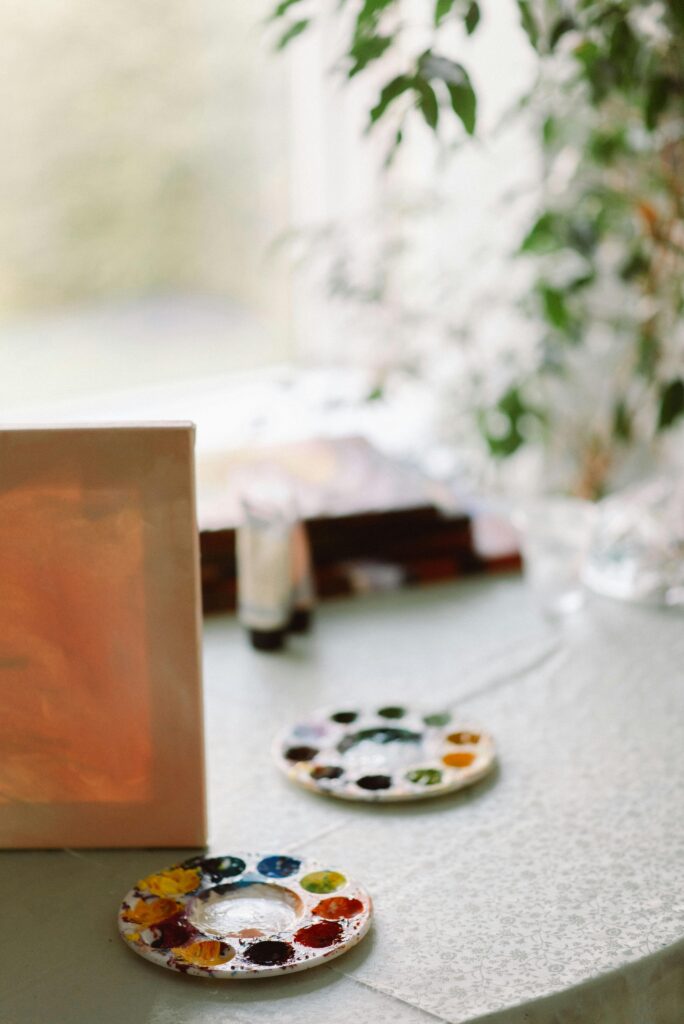How To Track Your Income And Costs As An Artist

You can’t fix what you don’t measure. It’s one of those unglamorous truths of being a working artist , the creative part might keep you inspired, but the numbers keep you afloat. Every sketch, sale, or submission eventually ties back to how you manage what comes in and what goes out. Yet most artists push this side of their practice to the very end of the to-do list, right next to updating their portfolio and replying to overdue emails.
An annual audit isn’t just a finance exercise, it’s a form of self-respect. It means taking your art career seriously enough to look at it from every angle , not with judgment, but with clarity. You’re not just asking, “Did I make enough this year?” You’re asking, “What did I build this year?” That question alone can change how you think about your creative output.
When you track your numbers, something shifts. You start seeing your patterns , the months when sales dip, the projects that bring steady returns, the collaborations that cost more energy than they gave back. Those insights are gold because they let you plan instead of react. Suddenly, “I hope I sell enough this month” turns into “I know exactly what works for me.”
And while the word “audit” sounds dry, it’s surprisingly empowering. It gives you a sense of ownership over your journey , proof that you’re not just making art, you’re managing a creative business with intention. You stop guessing and start steering. That small shift from chaos to clarity is what helps your career grow beyond survival mode.
The more you do it, the more natural it feels. Your spreadsheets stop being intimidating and start feeling like part of your studio routine, another creative tool that helps you stay grounded. The audit becomes a yearly reset, one that reminds you how much you’ve evolved and what deserves more space in your next chapter.
So instead of avoiding the numbers, treat them like feedback from your future. Each invoice, expense, and commission tells a story of how far you’ve come , and how much smarter your next moves

Start with What You Actually Earned (Not What You Hoped To)
Most artists begin their audit by writing down what they think they made, and that’s where things start to blur. The first step is to gather the hard data, not the estimates. Pull your PayPal history, gallery invoices, online shop sales, freelance payments , all of it. Seeing the full picture of your income sources on one page gives you a level of control that most creatives never reach.
This is where patterns begin to show. Maybe you notice that one-off commissions brought more cash flow than prints, or that your online shop quietly became your top earner while you were focused on a residency. The goal isn’t to judge but to observe. Your creative energy might be spread wider than you realize.
Once you see where your income really comes from, you can decide what deserves your focus next year. If a certain type of sale consistently performs, build around it. If something drains you without returning much, scale it back. This is how you shift from working harder to working smarter , through simple, honest visibility.
It’s also the moment where you separate “income streams” from “side hustles.” Anything that consistently earns money, even if it’s small, is an income stream worth tracking. The trick is to treat it like one. Document everything, even that small studio sale or last-minute print order. Those little amounts add up faster than you’d think.
By the end of this step, your numbers stop being intimidating. They start telling a story , one that’s uniquely yours, written through choices, experiments, and all the little pivots you made along the way.
Get Real About Your Costs (And Stop Guessing)
Every artist underestimates their expenses, usually by a mile. It’s easy to remember the big ones like framing or shipping, but what about that “quick” art supply run or the monthly app subscription you’ve been meaning to cancel? When you do your annual audit, every cost deserves its place on the spreadsheet.
This is the moment to be brutally honest with yourself. Collect receipts, open your bank statements, scroll through your PayPal purchases , it’s detective work, but the kind that pays off. Once you see the real total, you’ll probably have one of those “Oh wow, I didn’t realize” moments. That’s good. It means you’re finally seeing the reality behind your art-making.
The purpose here isn’t guilt, it’s insight. Every expense tells you something about how you work. Do you overspend in bursts before a show? Do you rely on last-minute shipping? Do you buy supplies in small, frequent batches instead of planning ahead? These details shape your sustainability more than you think.
Once you know your real numbers, you can set limits that actually make sense. You can budget for printing runs or materials months in advance instead of being surprised later. It’s not about cutting corners, it’s about cutting chaos.
Tracking your costs also reveals your values. If half your expenses go toward collaboration projects, that says something about your priorities. If you spend big on materials but little on visibility, maybe it’s time to shift balance. Either way, knowledge replaces stress.
If you’re serious about making your next artist audit less stressful and more strategic, the Artist Income & Expense Tracker Template is a total game-changer. It’s built specifically for artists who want to see where their money actually goes , no more guessing, no more last-minute number hunts before deadlines. You can log your sales, material costs, commissions, and studio expenses in one clean, easy-to-follow layout. Over time, you’ll start spotting patterns you’d otherwise miss , which projects pay off, which months perform best, and how your creative income truly evolves. It’s the kind of quiet system that keeps your art business steady while you stay focused on creating.
Know Your Equity: What You Own vs. What You Owe
This is the part most artists skip , the balance sheet. Equity is what remains once you subtract what you owe from what you own. It’s not just a business term; it’s your creative foundation. It shows how stable your career really is beneath the surface.
List out your assets first: your art inventory, equipment, digital tools, website, even your studio furniture. Then list what you owe: outstanding payments, debts, taxes due, or production costs for upcoming shows. The goal isn’t to feel discouraged but to see your reality clearly.
Knowing your equity helps you make better decisions. Maybe you realize your studio gear is worth more than you thought, or that you could sell a few older pieces to reinvest in a printer. It shows you where your value sits , not just in cash, but in capability.
It also builds confidence. When you know what you’ve built, you stop underselling yourself. You understand that your creative practice isn’t fragile, it’s an ecosystem. Each year, your equity should ideally grow , not just through money, but through tools, opportunities, and reputation.
That’s why this step matters. It’s not about counting pennies, it’s about counting progress. Your equity proves that your career has weight and that you’re not just chasing projects, you’re building something that lasts.

Identify Your Most Profitable Projects
Every artist has at least one project that pulls in far more value than it seems to. It might be a print collection, a workshop, a partnership, or a licensing deal. The only way to find it is by looking back at the numbers with clear eyes. Which project gave you the best return for your time, energy, and costs combined? That’s your goldmine.
When you find it, study it. What made it work? Was it the audience, timing, pricing, or format? Most artists think success happens by luck, but it’s often a pattern waiting to be noticed. The audit exposes it, like a hidden map of what actually sustains you.
From there, you can double down on what works without burning out. Maybe you turn one workshop into a series, or expand a limited print run into seasonal drops. Replicating success doesn’t make you repetitive, it makes you strategic.
You’ll also see what didn’t work , the shows that cost more than they returned, or the collaborations that drained resources. Let those lessons shape your next moves instead of repeating old mistakes.
The point is to make your creative year data-informed without losing heart. You’re not replacing instinct with spreadsheets, just giving it backup.
Build a Habit, Not a Headache
An annual audit doesn’t have to be painful. The trick is to stop treating it like a once-a-year chore and start building it into your creative rhythm. Instead of dumping a year’s worth of chaos into one weekend, track things monthly or quarterly. It’ll save you stress and probably a few gray hairs.
Make it part of your studio routine, like cleaning brushes or updating your portfolio. Set a recurring calendar reminder to log income and expenses. Once it becomes a habit, it stops feeling like “admin work” and starts feeling like self-care for your business.
You’ll be surprised by how much peace of mind this brings. You’ll make faster decisions, like knowing exactly when to say yes to a project or when to raise your prices. The data supports your gut, which means less second-guessing overall.
You can even gamify it , set mini goals, like increasing passive income by 10% or cutting unnecessary costs by half. Each small win compounds into something real.
By the end of the year, your audit becomes more like a celebration than a chore. You’ll have proof of how far you’ve come and clarity on where you’re heading next. That’s not bookkeeping, that’s creative direction in disguise.
Audit Your Time Like You Audit Your Money
Most artists track money but forget that time is their most valuable currency. When you start logging how you actually spend your studio hours, you’ll realize where your days go , and where they quietly leak away. Maybe half your “painting day” turns into answering emails, or your weekends vanish into packaging prints. That’s not failure, that’s information.
To begin, spend a week or two tracking your time honestly. Write down how long tasks actually take , prepping canvases, editing photos, writing grant proposals. Then look at the patterns. The goal isn’t to guilt yourself, but to notice what truly fuels your practice and what drains it.
Once you see the breakdown, treat your time like a budget. Give more of it to the work that matters most, and cap what doesn’t. For example, if admin eats 30% of your schedule, see if you can automate, batch, or outsource part of it. You’ll be amazed at how freeing it feels to take control of your hours the same way you manage money.
Your annual audit should include this time review every year. Over time, you’ll see how your rhythms evolve. Maybe you need slower months for exploration or intense bursts before shows. When you understand how your time flows, you stop running your career on burnout and start designing it around how you actually work best.
By tracking your time alongside income and costs, your creative business becomes more intentional. You’ll make decisions based not on panic, but on proof.
Review Your Collaborations and Partnerships
Partnerships can make or break an artist’s year. Maybe a gallery collaboration opened doors, or a group project stretched on for months without real payoff. The audit is the perfect place to step back and review which connections truly helped you grow and which only looked good on paper.
Start by listing every collaboration you engaged in this year , curators, galleries, online platforms, collectives, sponsors. Then, rate them by what they brought: visibility, money, skills, or community. You’ll quickly see which ones enriched your career and which drained your time.
This isn’t about being ungrateful, it’s about clarity. Sometimes a partnership teaches you something even if it doesn’t “succeed.” But if it only causes stress or delays your own projects, it’s okay to set boundaries or step away. That’s not selfish, that’s strategic.
Use this reflection to guide your next year’s collaborations. Maybe you’ll choose fewer but deeper ones, or shift toward partnerships that align more with your artistic values. Strong collaborations are investments , they should add something meaningful, not just look impressive on social media.
Over time, this part of your audit becomes a compass for your professional network. It helps you stay surrounded by people who lift your practice higher instead of weighing it down.

Revisit Your Pricing with Fresh Eyes
Your audit isn’t complete without checking if your prices still make sense. Many artists set a price once and stick to it for years, even as their skill, demand, and costs evolve. If you haven’t reviewed your pricing lately, there’s a good chance it’s due for an update.
Start by looking at your sales data. Which works sold fast, and which lingered? If something consistently sells within days, that’s a sign your audience might be willing to pay more. On the other hand, if certain pieces rarely move, maybe the pricing or format needs a rethink.
Then, cross-check your costs. Have materials or shipping prices gone up? Are you spending more time per piece than before? Your pricing should grow with your process, not lag behind it. When your audit exposes the gap between what you earn and what your time deserves, that’s your cue to recalibrate.
Don’t think of raising prices as arrogance; think of it as alignment. You’re adjusting the numbers to match your reality. It shows professionalism and confidence, not ego.
The result? A sustainable structure where your art supports you as much as you support it. That’s the real goal of a yearly audit , to make your creative business grow at the same pace as you do.
Compare Your Goals to Your Results
Every January, artists set hopeful goals , finish a new series, get a feature, apply to residencies. By December, those intentions often fade behind deadlines and distractions. The annual audit is your chance to reconnect with those promises and measure how close you actually got.
Pull up your goals from last year, even if they make you cringe a little. Go through them one by one. Did you achieve them? Did your focus shift along the way? Sometimes, what looks like “falling short” is really a natural redirection. Maybe you didn’t land the gallery show, but you built an online shop that sold out twice. That counts.
This reflection helps you see your creative growth in real terms. It’s not about success or failure, it’s about honesty. You’ll start noticing which goals still excite you and which no longer fit who you’ve become.
Then, use what you learn to set clearer, more grounded goals for next year , ones tied to real numbers and timelines. The audit helps you plan from evidence, not wishful thinking.
Looking back this way turns hindsight into fuel. You stop guessing what works and start designing a creative path that’s actually aligned with your progress.
Document Lessons and Wins (So You Don’t Forget Them)
By the end of your audit, you’ll have a mountain of insight , what worked, what didn’t, and what you want next. Before you move on, take time to write it all down. Not in a stiff report, but in your own words: what you learned, what you’re proud of, what surprised you.
This reflection turns your audit from a spreadsheet task into something meaningful. It helps you recognize growth you might’ve overlooked , the new collectors you met, the confidence you built in pitching, the boundaries you learned to set. Those are real wins, even if they don’t show up as numbers.
You can create a simple “Year in Review” document or board in Trello or Notion. Include a few highlights, lessons, and next steps. Revisit it whenever you feel lost or unmotivated , it’ll remind you of how far you’ve come.
This documentation also makes your next audit easier. You’ll have context and a personal timeline to compare against. Each year’s notes build on the last, showing not just growth, but direction.
The point isn’t perfection, it’s progress you can see. By the time you’re done, your annual audit feels less like paperwork and more like proof that your art career is evolving with intention, one year at a time.
